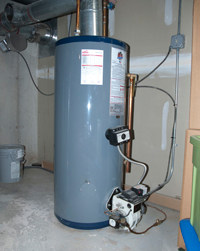Ensuring Durability of Your Home's Hot Water System: Care TipsStraightforward Ways to Care for Your Home's Hot Water System ProperlyBest Practices for Maintaining Your Home's Hot Water System
Ensuring Durability of Your Home's Hot Water System: Care TipsStraightforward Ways to Care for Your Home's Hot Water System ProperlyBest Practices for Maintaining Your Home's Hot Water System
Blog Article
What are your opinions concerning How to Maintain a Hot Water Heater in a Few Simple Steps?
:max_bytes(150000):strip_icc()/reasons-gas-water-heater-not-working-5212987-hero-fe6b82a59053421c88b7d13ea311d3c5.jpg)
Warm water is essential for everyday convenience, whether it's for a refreshing shower or washing meals. To guarantee your warm water system runs efficiently and lasts longer, routine upkeep is essential. This post gives practical tips and insights on exactly how to keep your home's hot water system to avoid interruptions and expensive fixings.
Intro
Maintaining your home's hot water system might appear overwhelming, but with a few simple steps, you can ensure it operates smoothly for many years ahead. This overview covers every little thing from recognizing your warm water system to do it yourself upkeep pointers and recognizing when to hire expert assistance.
Significance of Preserving Your Hot Water System
Regular upkeep not only expands the lifespan of your warm water system yet additionally guarantees it runs effectively. Ignoring maintenance can result in reduced effectiveness, higher power costs, and even premature failing of the system.
Indicators Your Warm Water System Needs Maintenance
Knowing when your warm water system needs attention can protect against significant problems. Keep an eye out for indicators such as inconsistent water temperature level, odd noises from the heater, or rusty water.
Purging the Hot Water Heater
Flushing your water heater eliminates sediment build-up, boosting effectiveness and extending its life.
Checking and Changing Anode Rods
Anode rods stop rust inside the tank. Evaluating and changing them when worn out is crucial.
Facility Problems Needing Professional Aid
Examples include major leakages, electrical issues, or if your water heater is consistently underperforming.
Regular Professional Upkeep Advantages
Specialist upkeep can include thorough examinations, tune-ups, and guaranteeing conformity with security standards.
Checking and Changing Temperature Settings
Readjusting the temperature setups guarantees optimum performance and safety.
Do It Yourself Tips for Maintenance
You can do several maintenance jobs yourself to maintain your hot water system in leading condition.
Looking for Leakages
On a regular basis inspect pipelines and connections for leaks, as these can cause water damages and higher expenses.
Recognizing Your Hot Water System
Prior to diving right into maintenance tasks, it's practical to understand the fundamental parts of your hot water system. Usually, this consists of the hot water heater itself, pipes, anode rods, and temperature controls.
Monthly Upkeep Tasks
Normal monthly checks can help catch small concerns before they rise.
Testing Pressure Alleviation Valves
Checking the stress safety valve guarantees it works correctly and prevents excessive pressure build-up.
Insulating Pipelines
Protecting warm water pipes decreases warm loss and can save power.
When to Call an Expert
While DIY maintenance is valuable, some issues require expert experience.
Verdict
Normal upkeep of your home's warm water system is important for effectiveness, durability, and expense financial savings. By complying with these ideas and understanding when to look for expert aid, you can make certain a reliable supply of hot water without unforeseen interruptions.
Water Heater Maintenance Tips
Test the TPR Valve
Shut off the power and the cold-water supply valve. Place a bucket under the pipe connected to the temperature-pressure-release (TPR) valve on the top or side of the tank. (This valve opens if the tank pressure gets too high.) Lift the valve’s tab to let some water out, then let go. If water keeps flowing, drain the tank partway, unscrew the old valve with a pipe wrench, and install a new one. Check the Anode Rod
Put a hose to the tank’s drain cock and let out a few gallons of water. Now fit a 1 1/16-inch socket onto the rod’s hex head on top of the heater (or under its top plate) and unscrew the rod. If it’s less than ½ inch thick or coated with calcium, buy a new one, wrap its threads with Teflon tape, put it back in the tank, and tighten securely. Use this segmented rod if headroom above the tank is limited. Drain the Tank and Wash Out Sediment
Drain the remaining water in the tank into the bucket, then stir up the sediment on the tank’s bottom by briefly opening the cold-water supply valve. Drain and repeat until clean water comes out of the hose. Close the drain cock, refill the tank, and turn its power back on. Adjust the Temperature
Find the temperature dial on the side of the tank and unscrew its cover. Adjust the dial to 120 degrees using a flathead screwdriver. For every 10 degrees the temperature is lowered, you can expect to save up to 5 percent in energy costs. Turn the water heater off or the thermostat down to its lowest setting if you plan to be away from home for more than three days. Insulate the Pipes
Buy some self-sticking 3/8-inch-thick foam pipe insulation that matches the pipes’ diameter. Slide the foam over the hot-and cold-water pipes as far as you can reach. Insulating the cold-water pipe prevents condensation in summer. Peel the tape and squeeze the insulation closed. If the pipe is 6 inches or less from the flue, cover it with 1-inch-thick unfaced fiberglass pipe wrap. https://www.thisoldhouse.com/plumbing/21016402/how-to-maintain-a-water-heater

I was made aware of that write-up about How to Maintain a Hot Water Heater in a Few Simple Steps from a friend on another web property. Sharing is nice. One never knows, you may just be helping someone out. Thanks so much for your time invested reading it.
Book With Us Today! Report this page